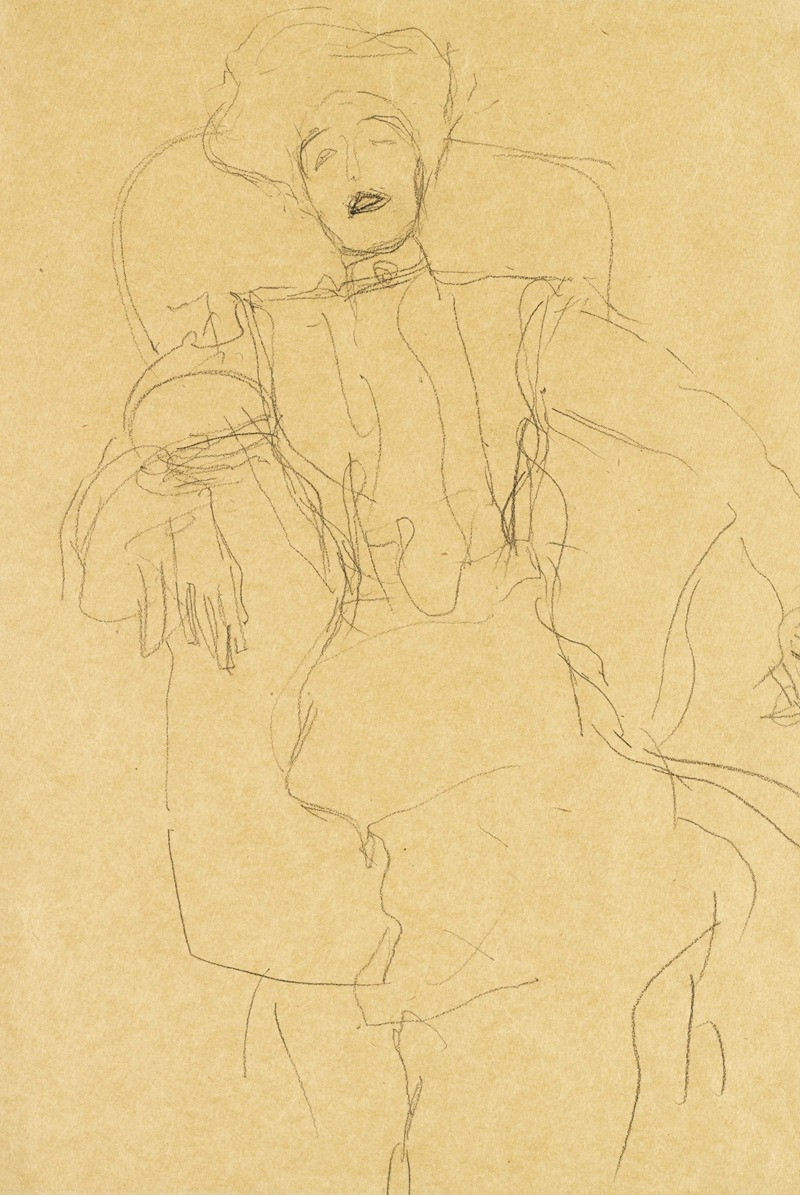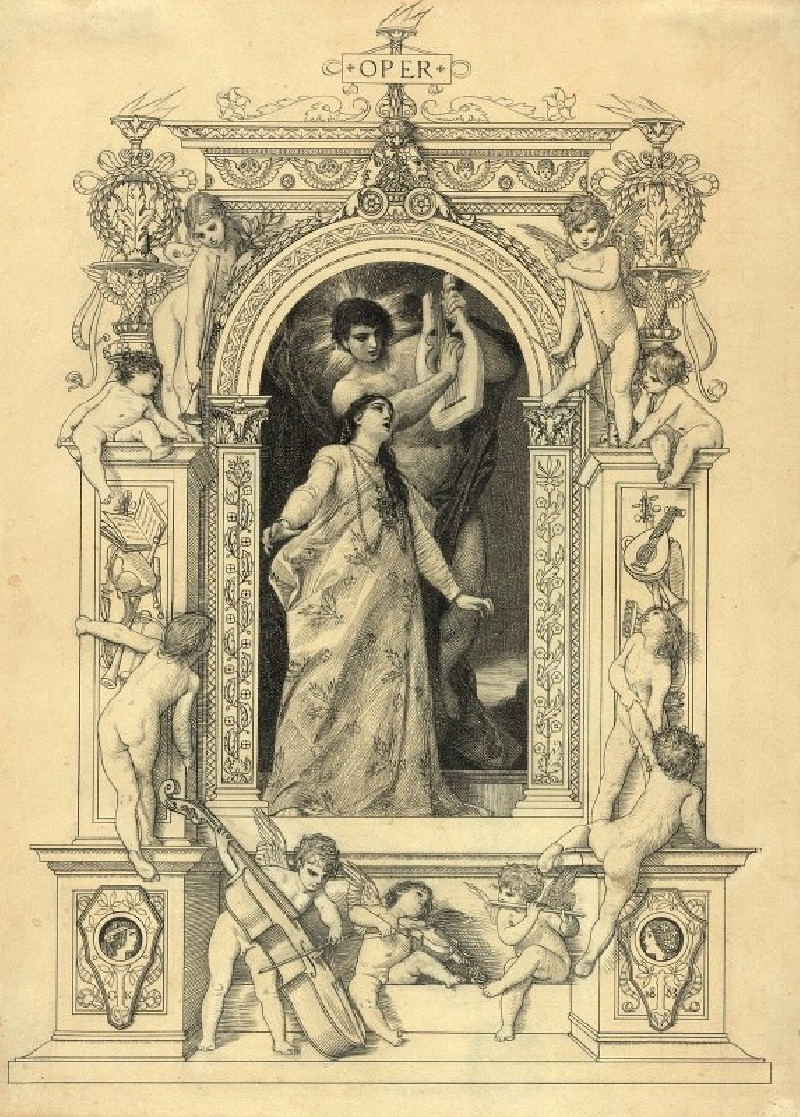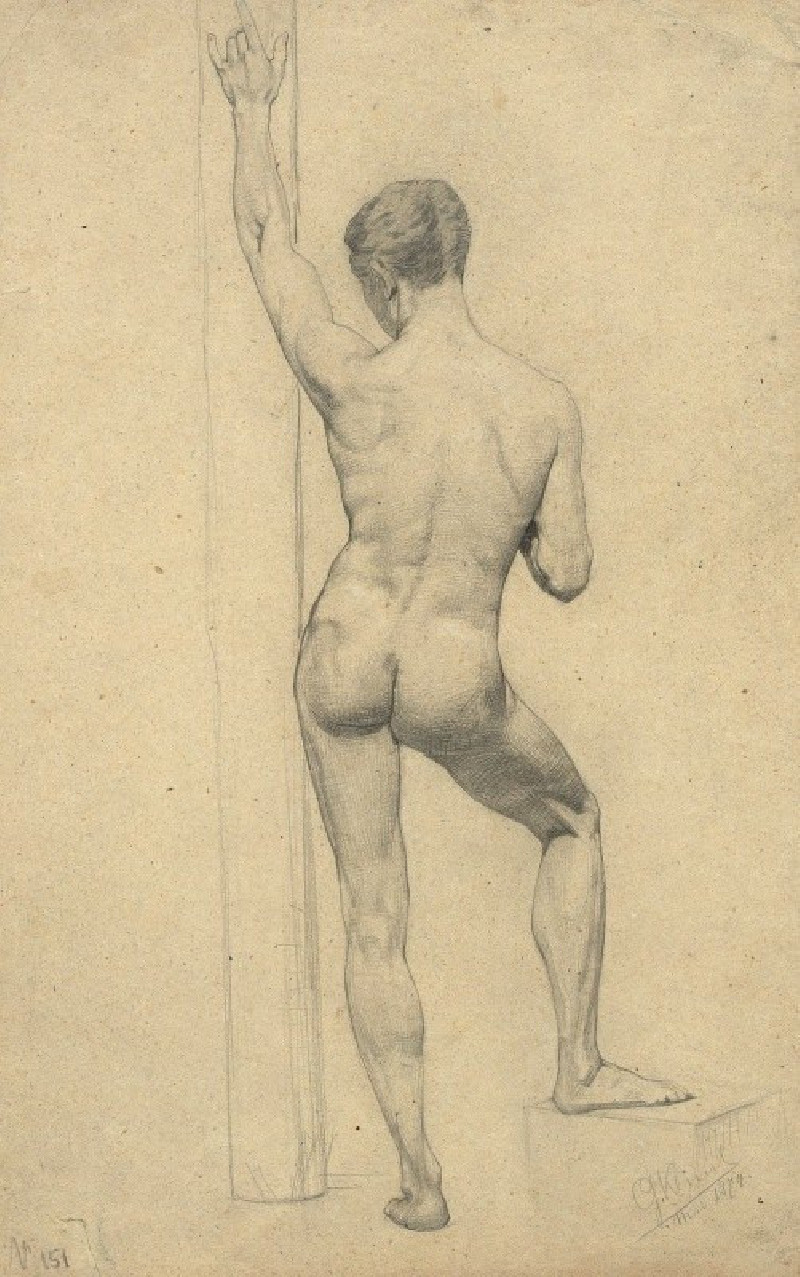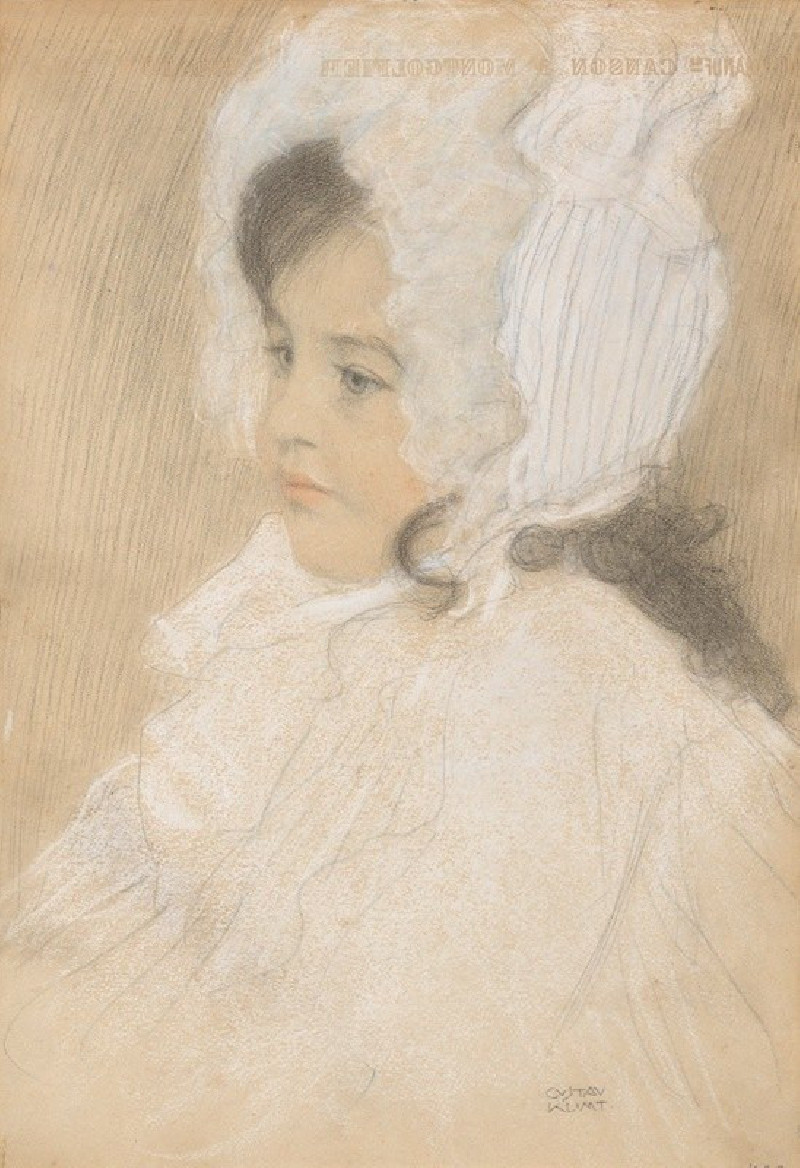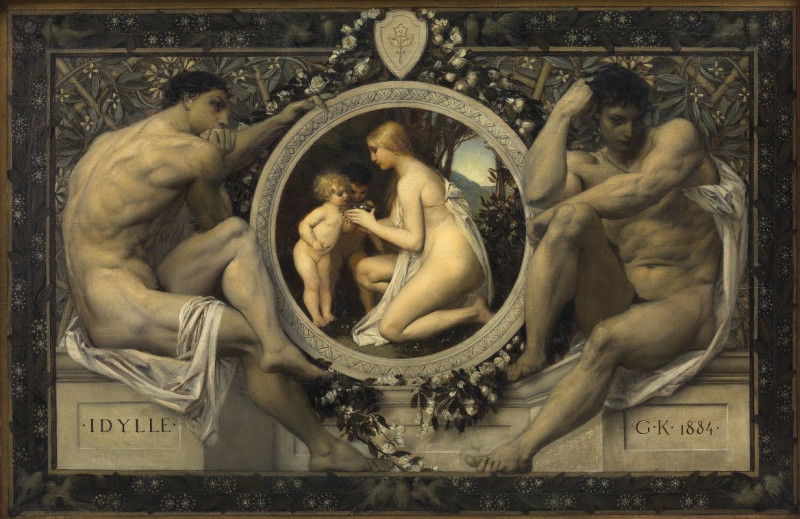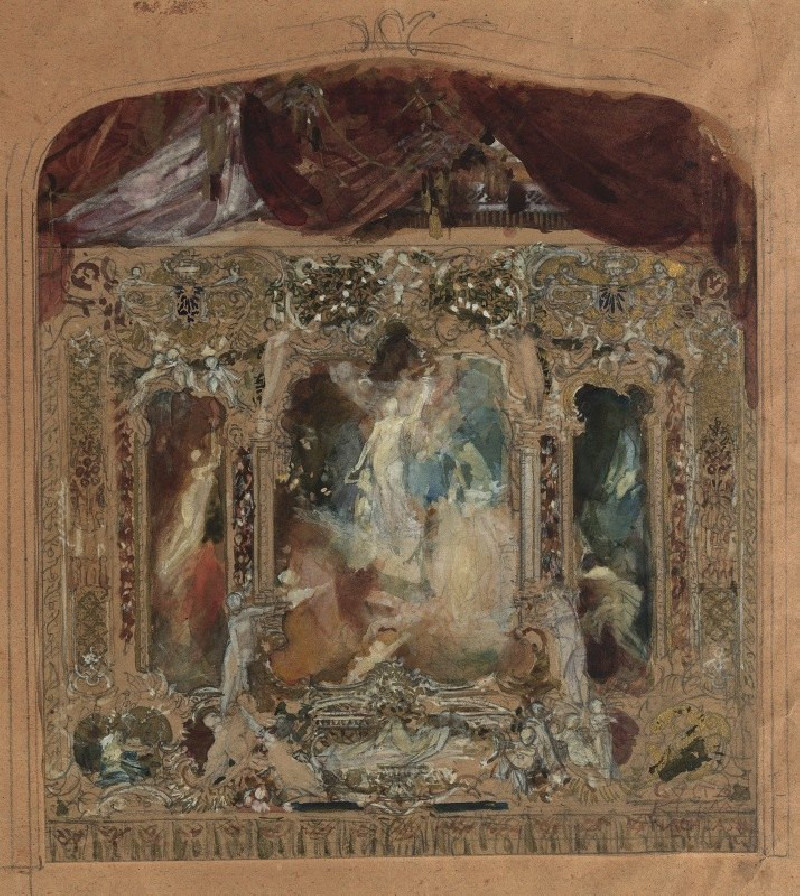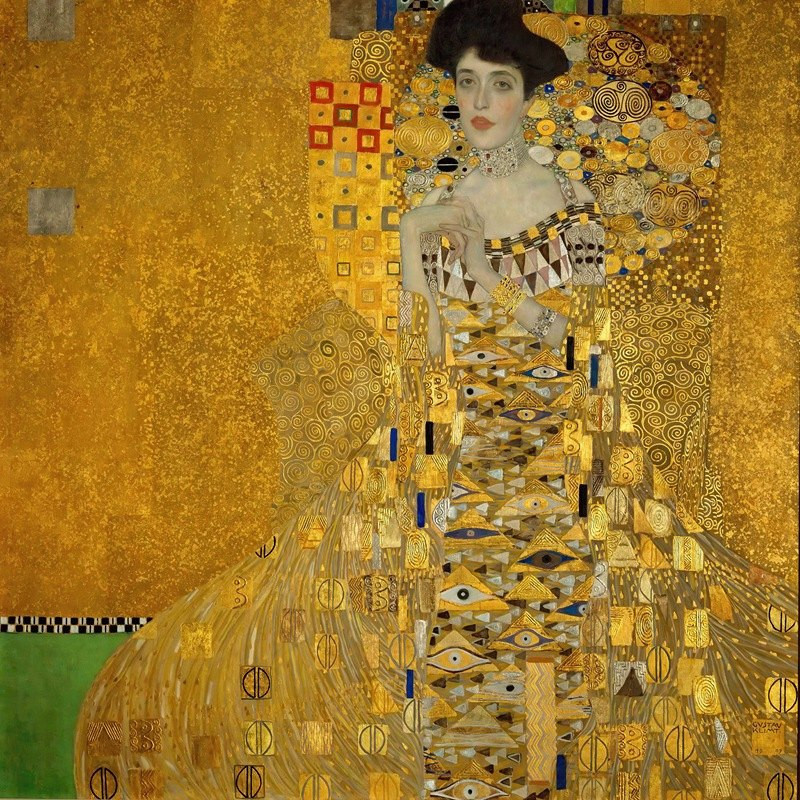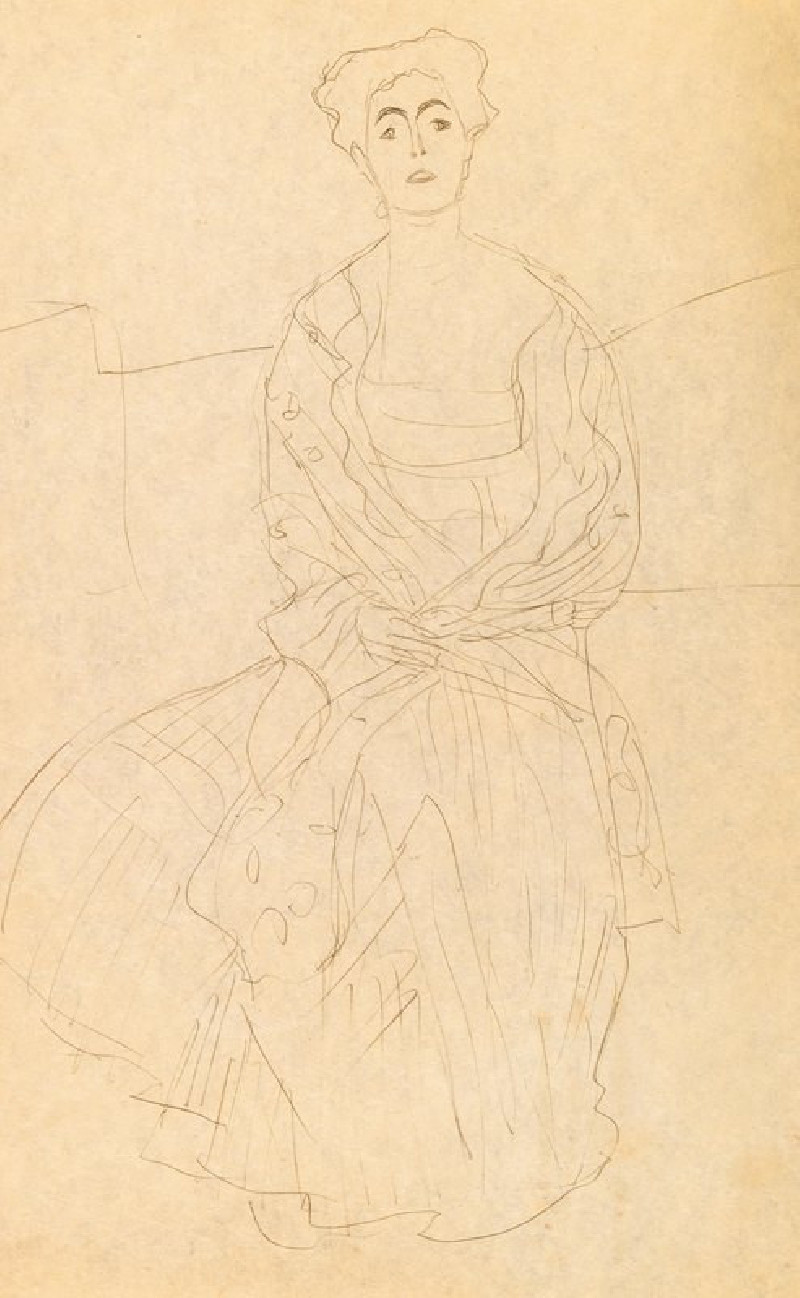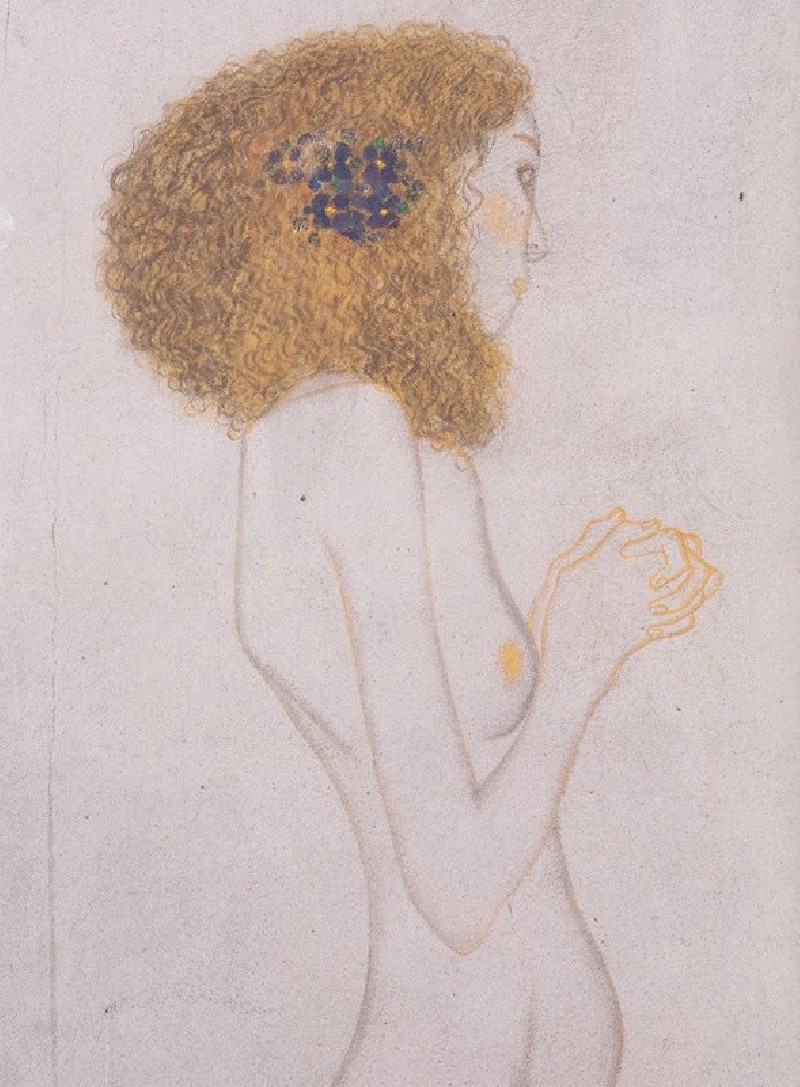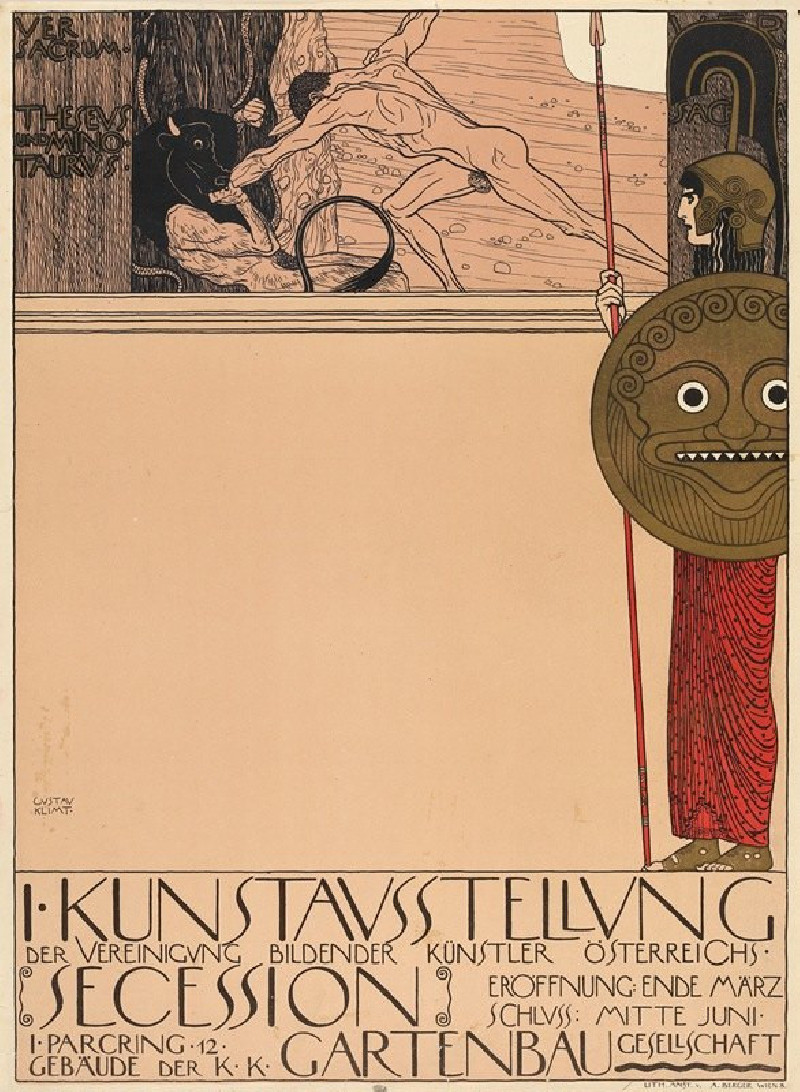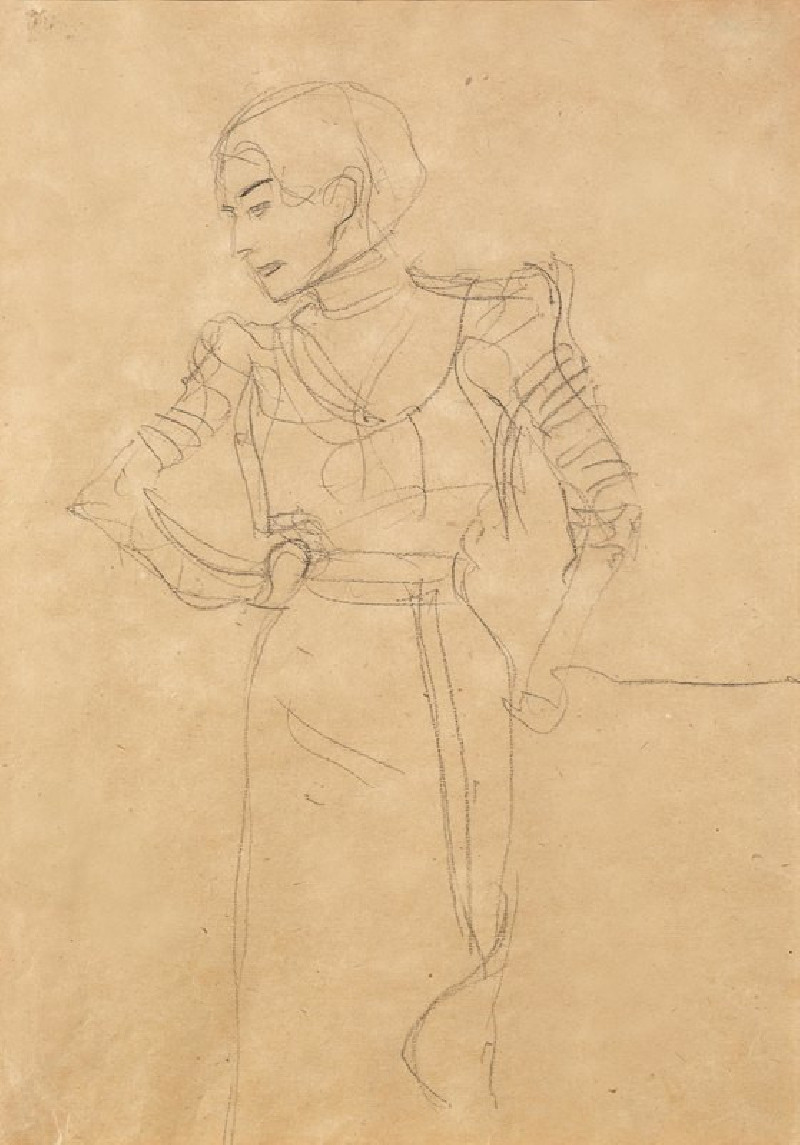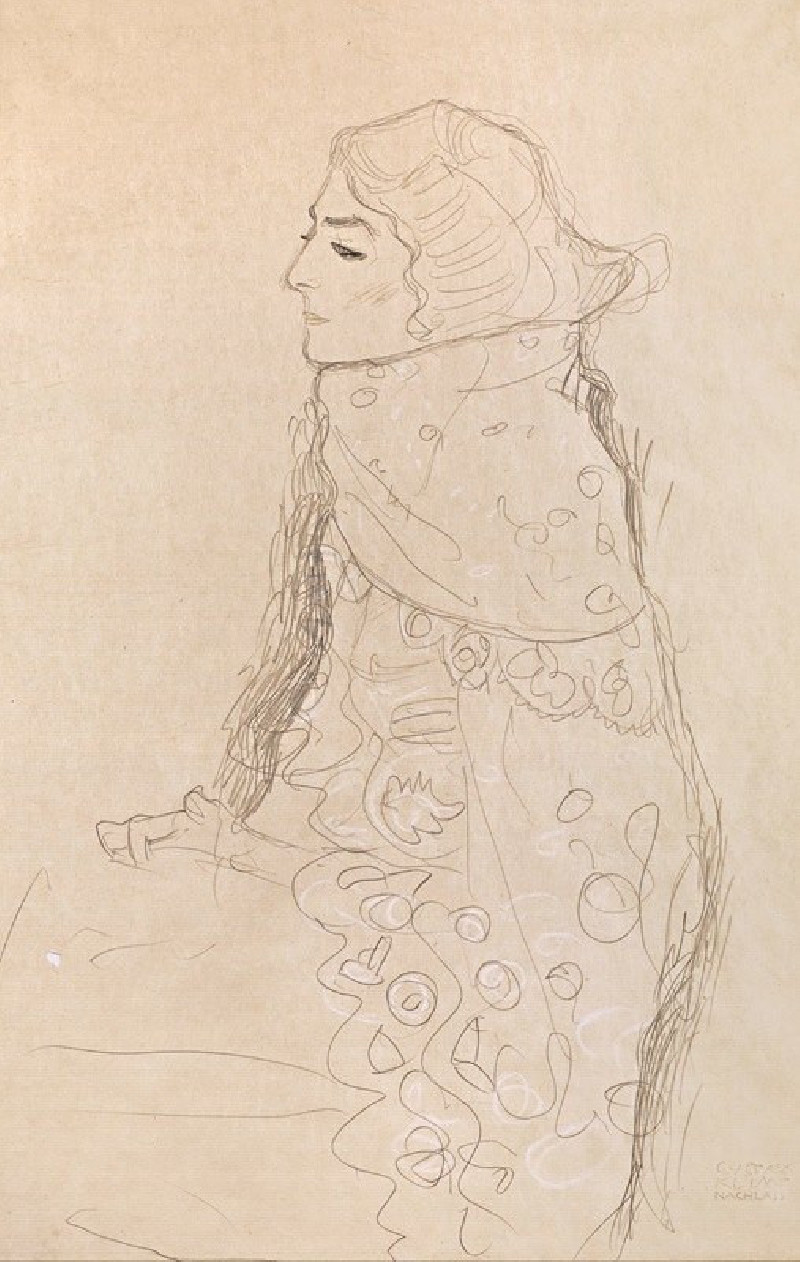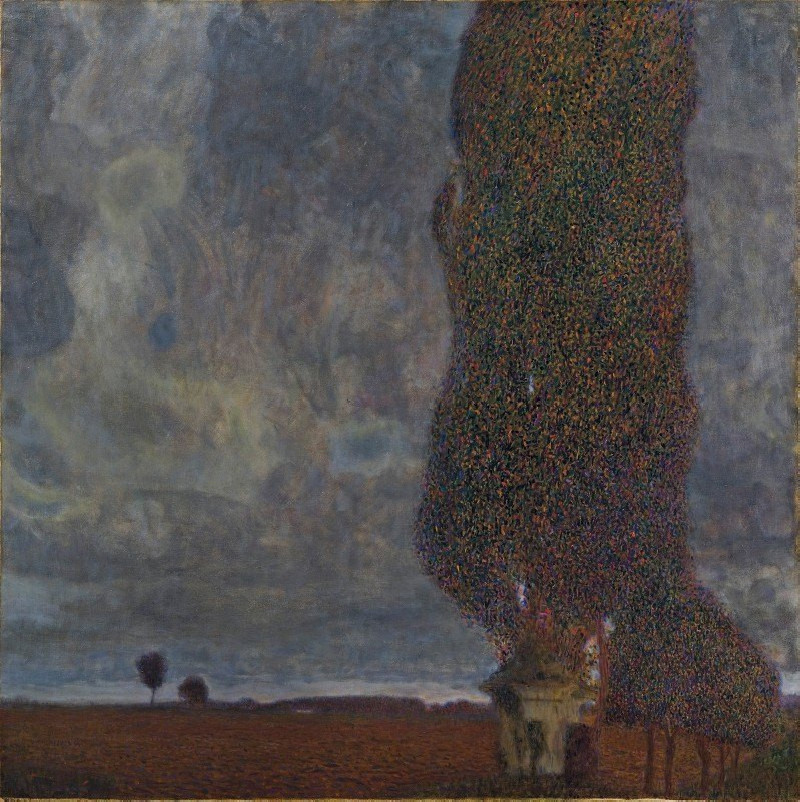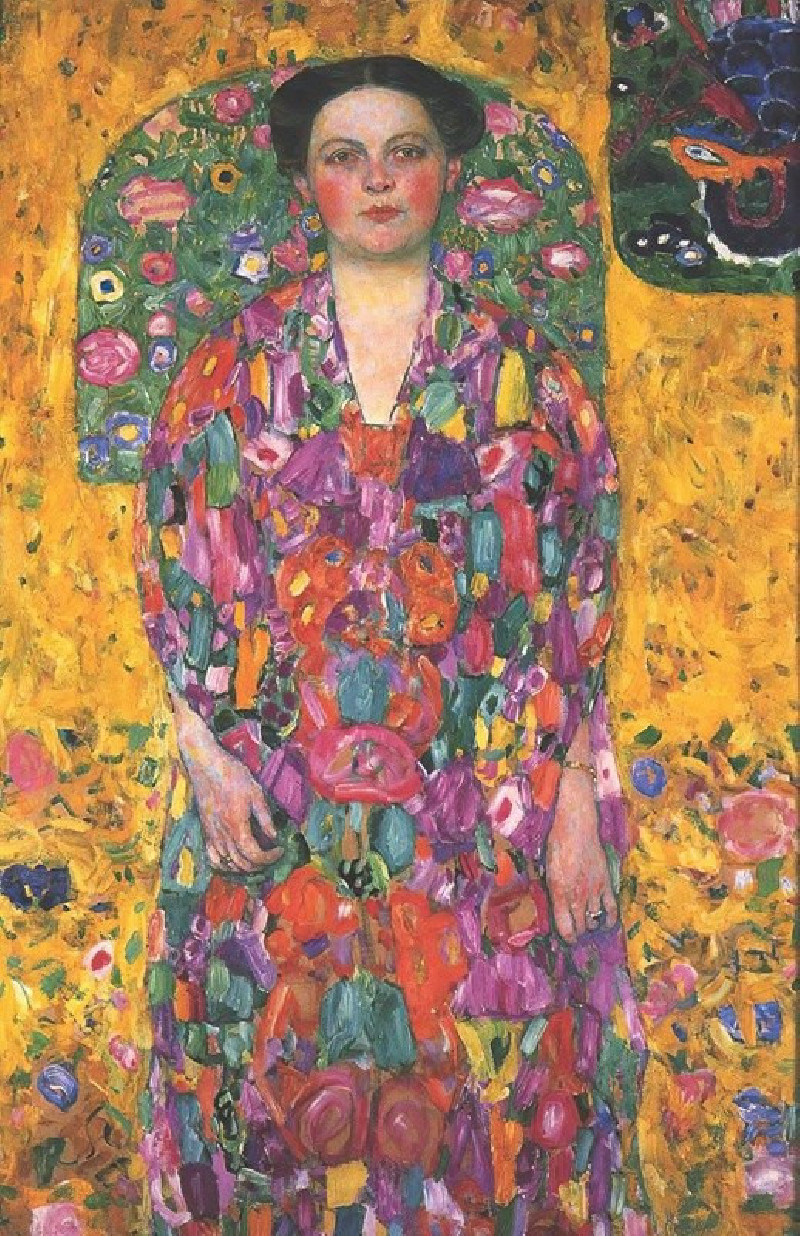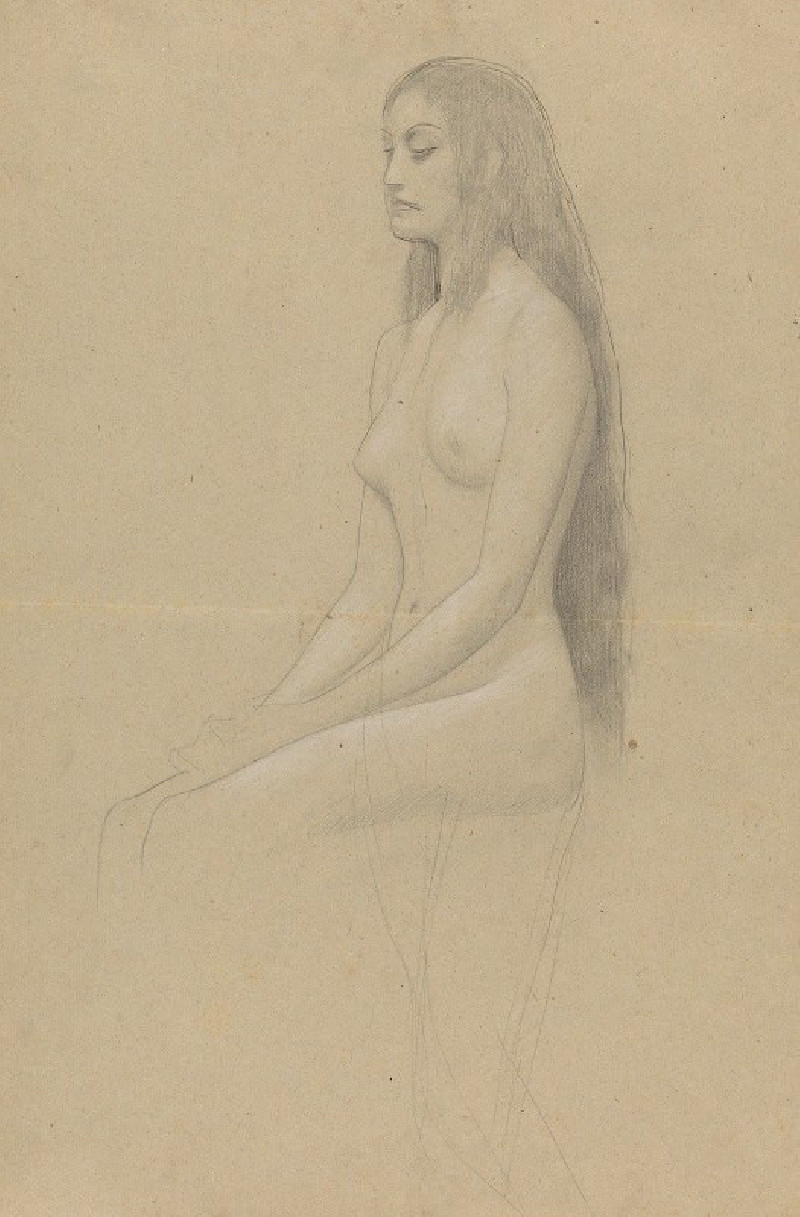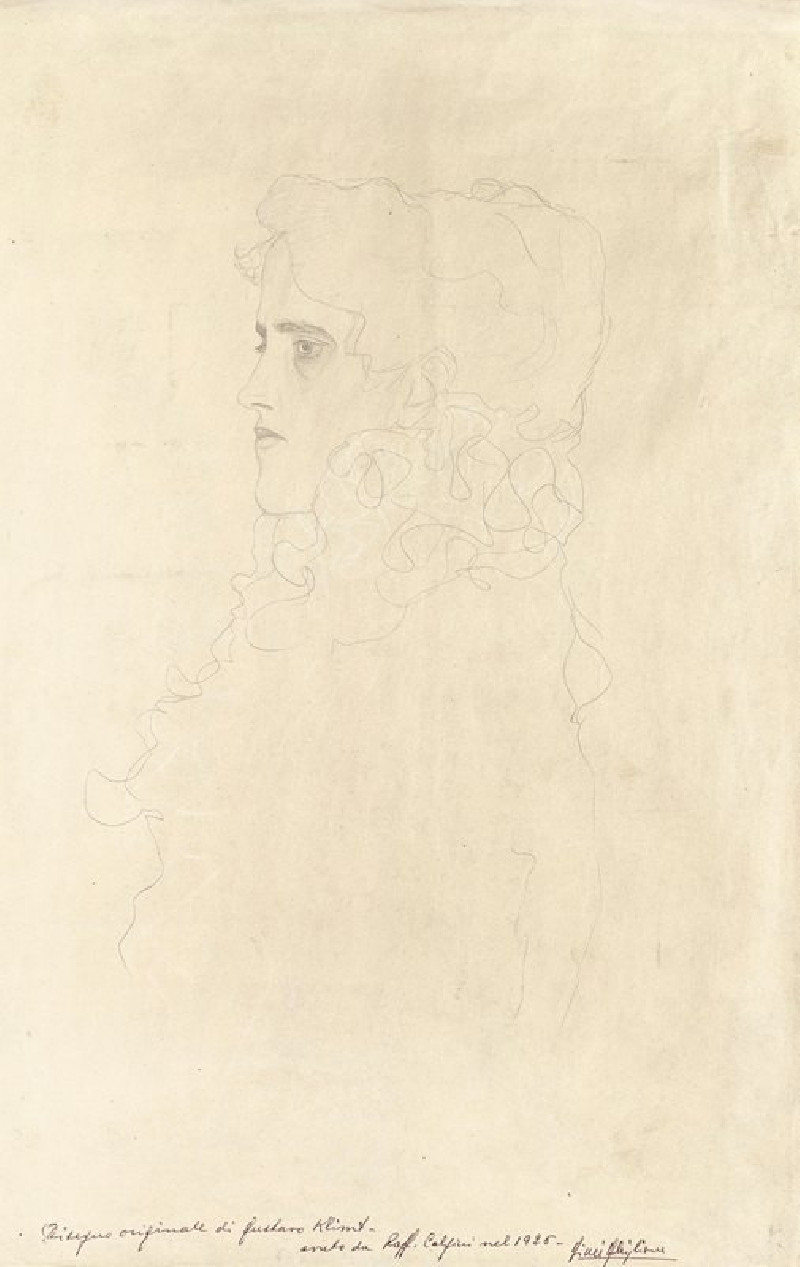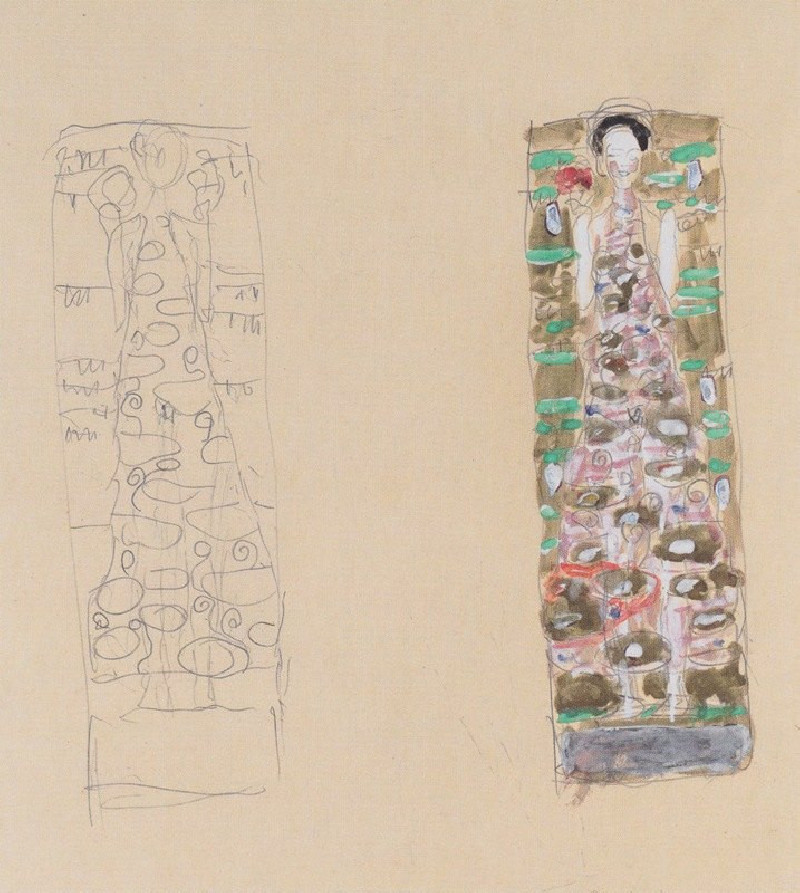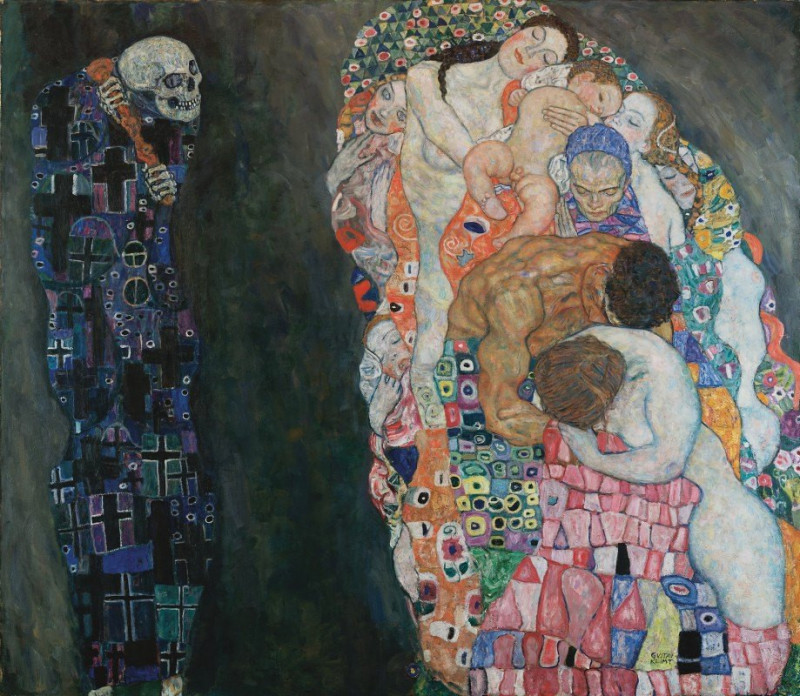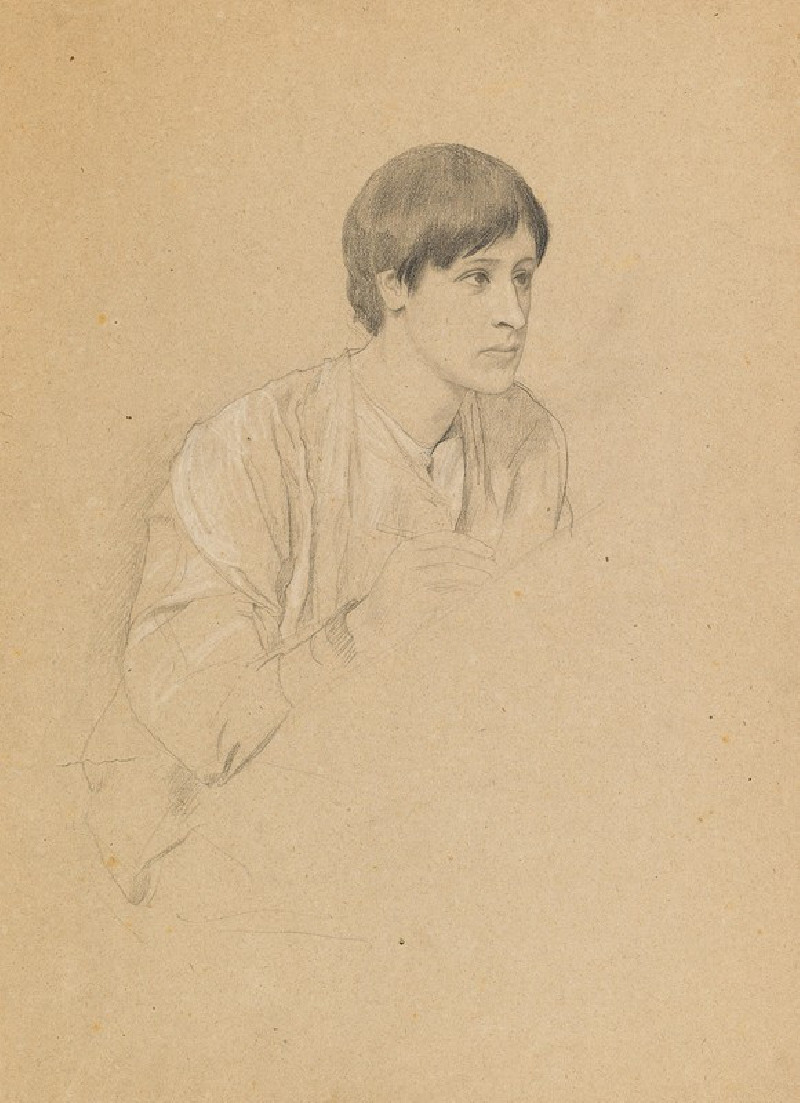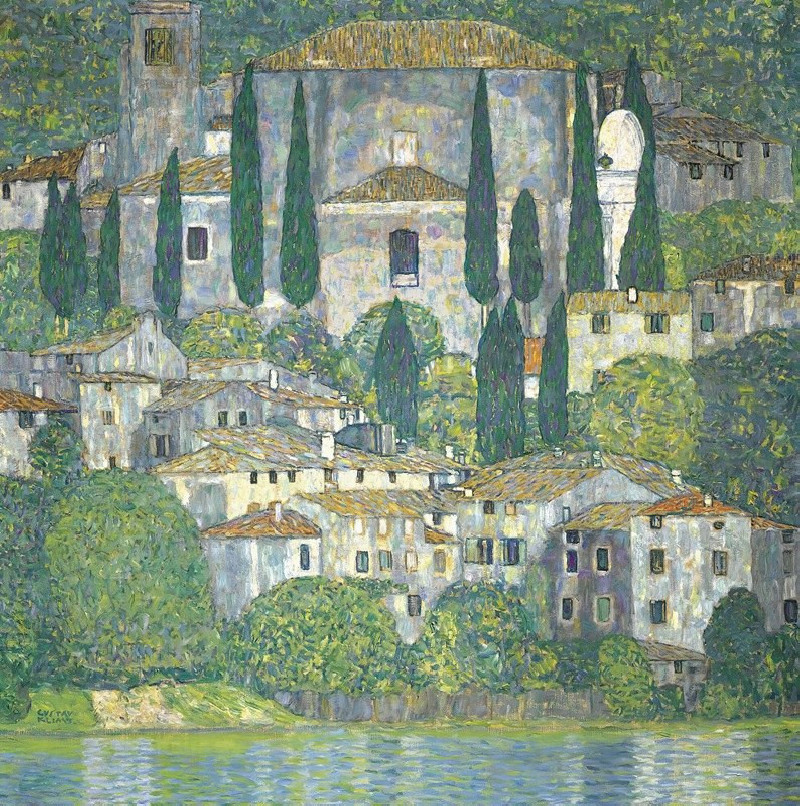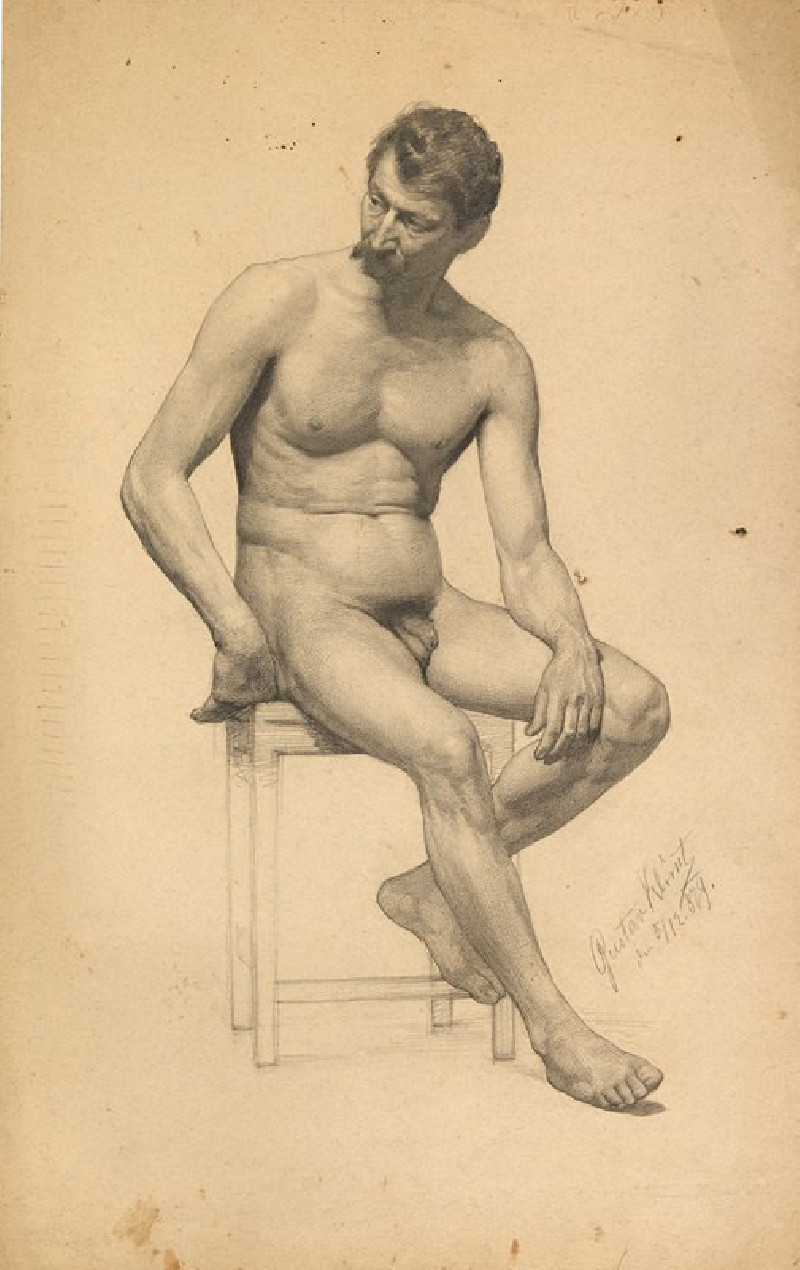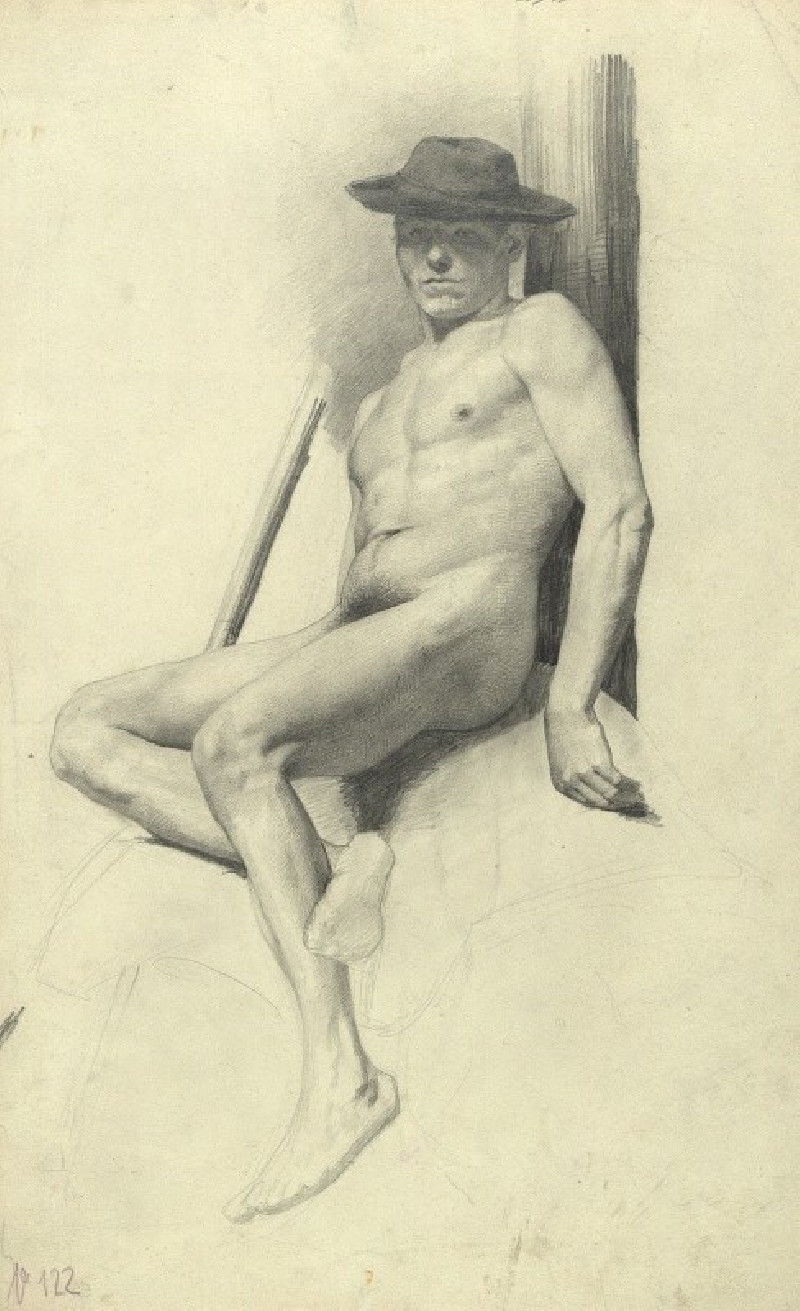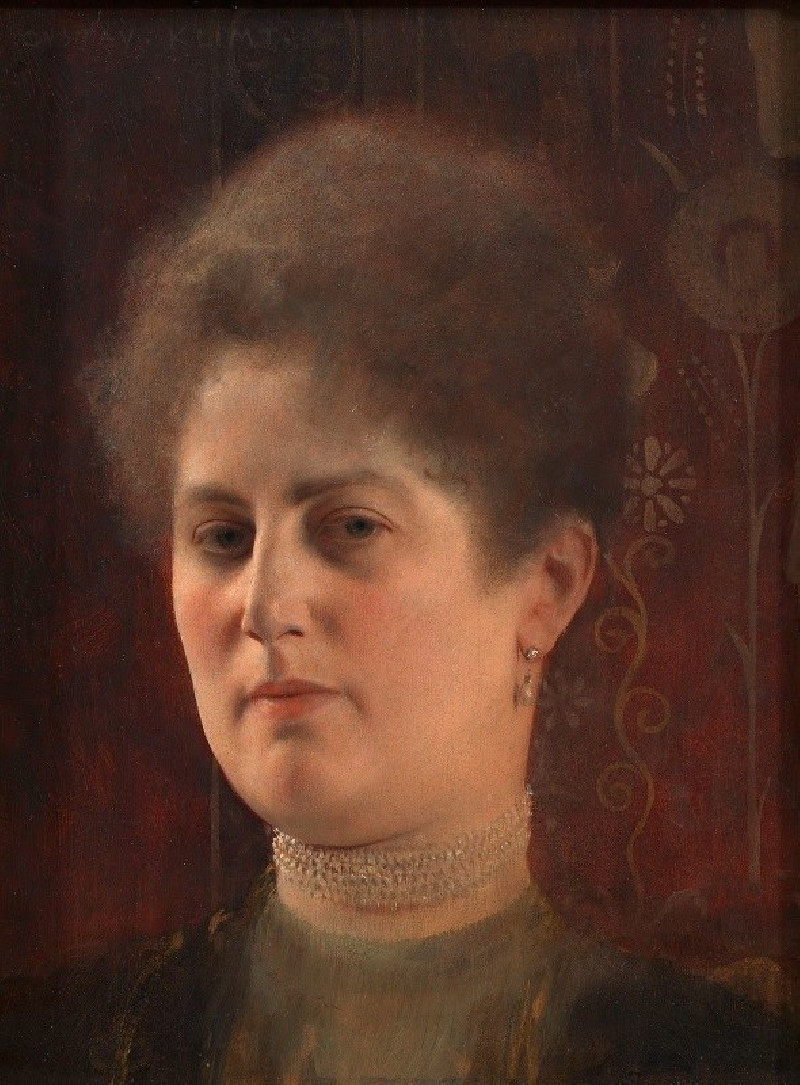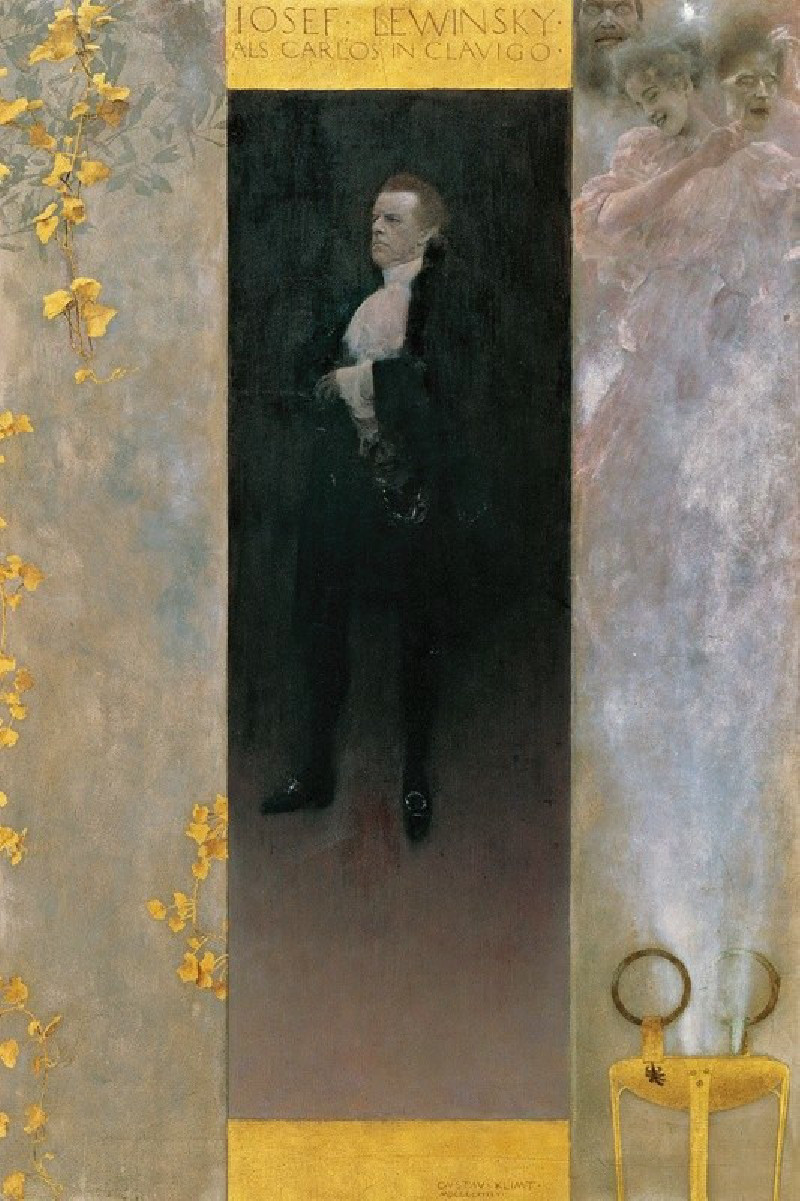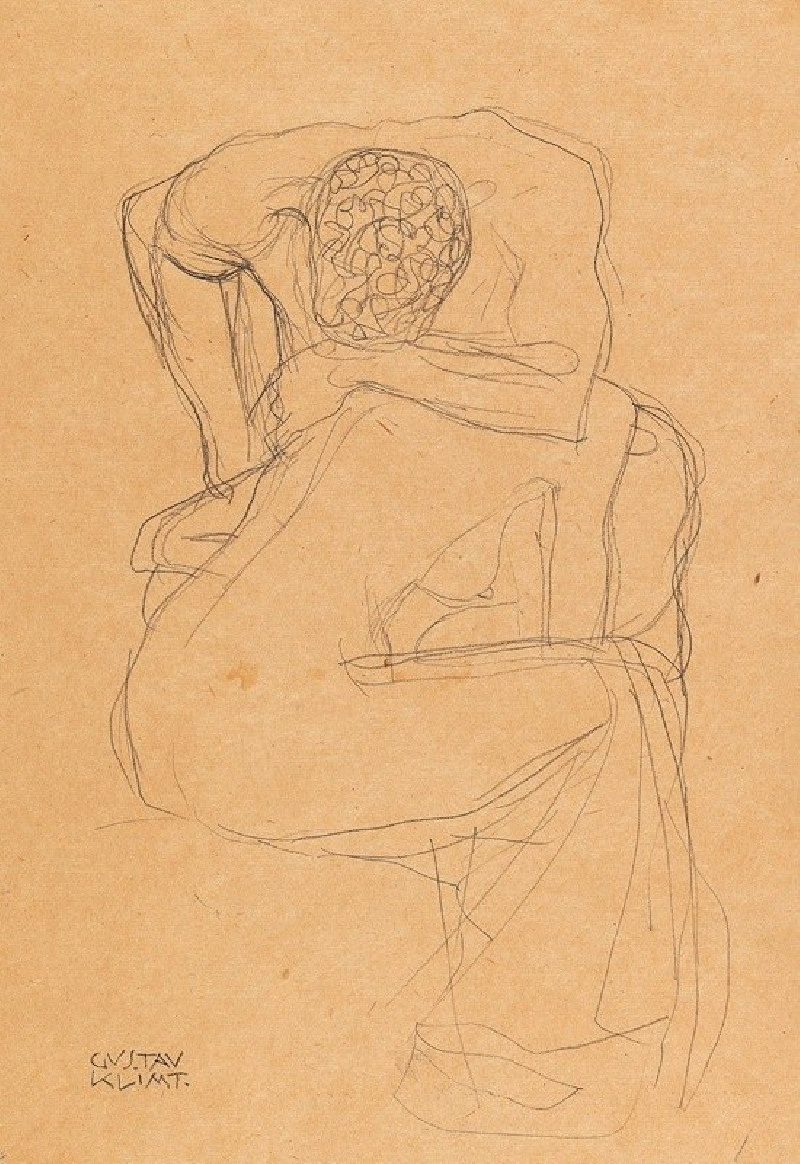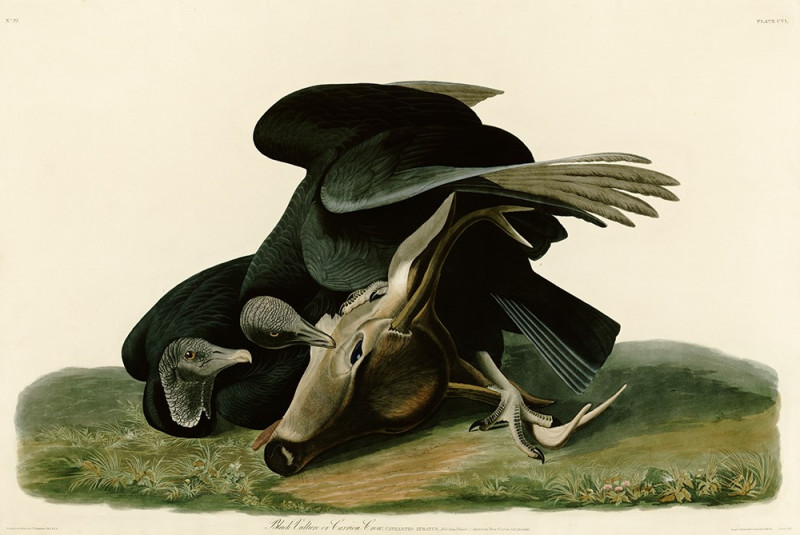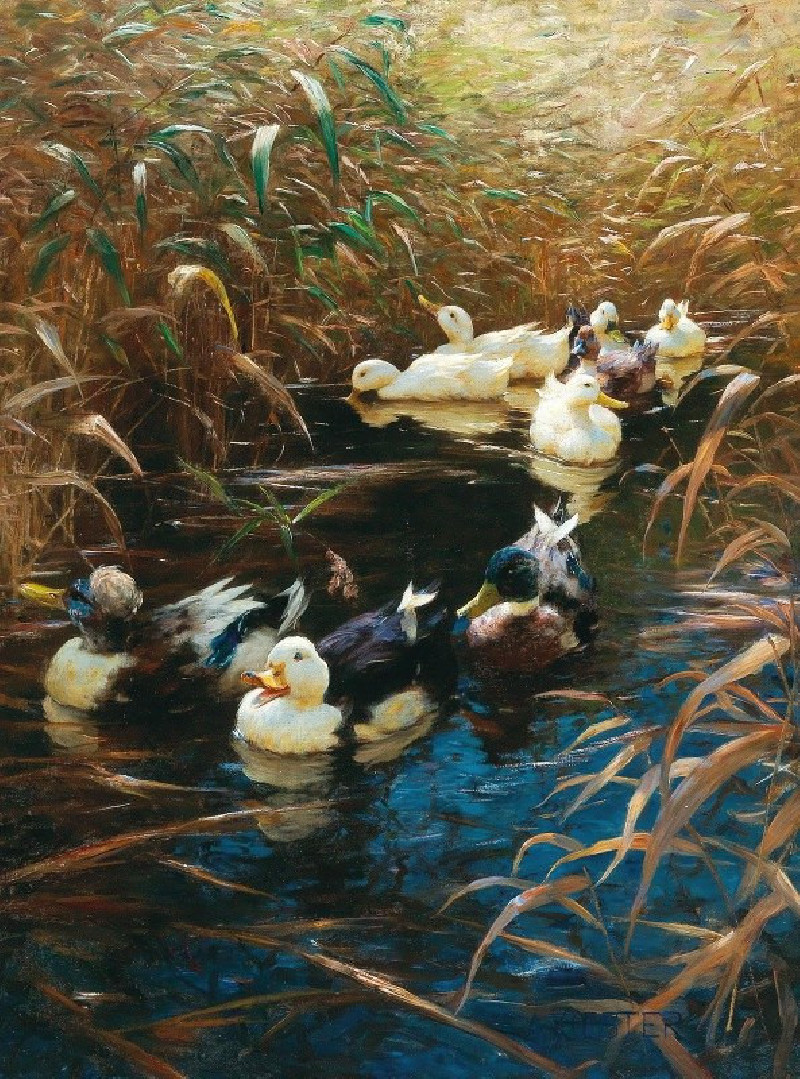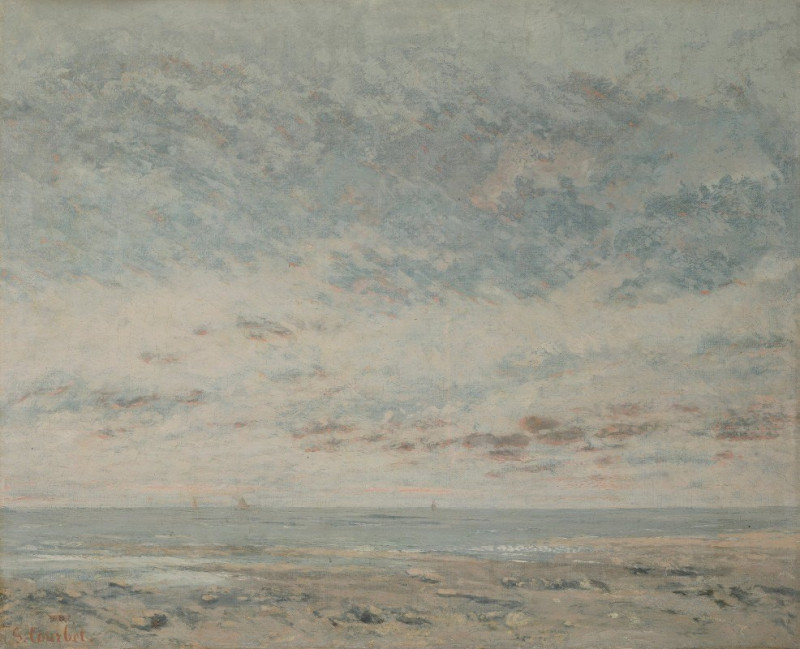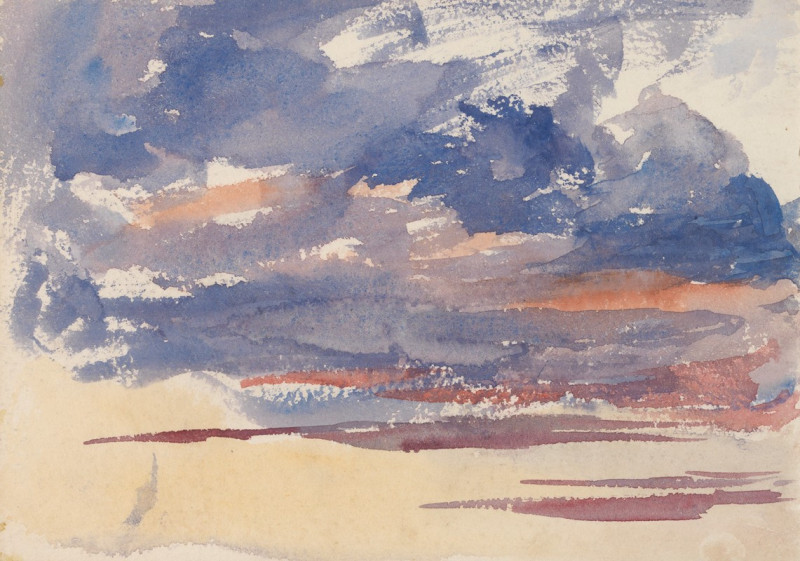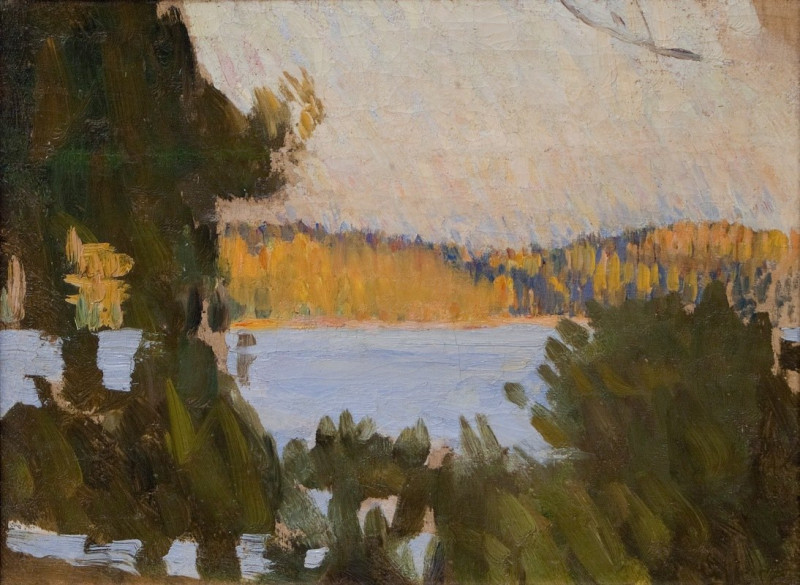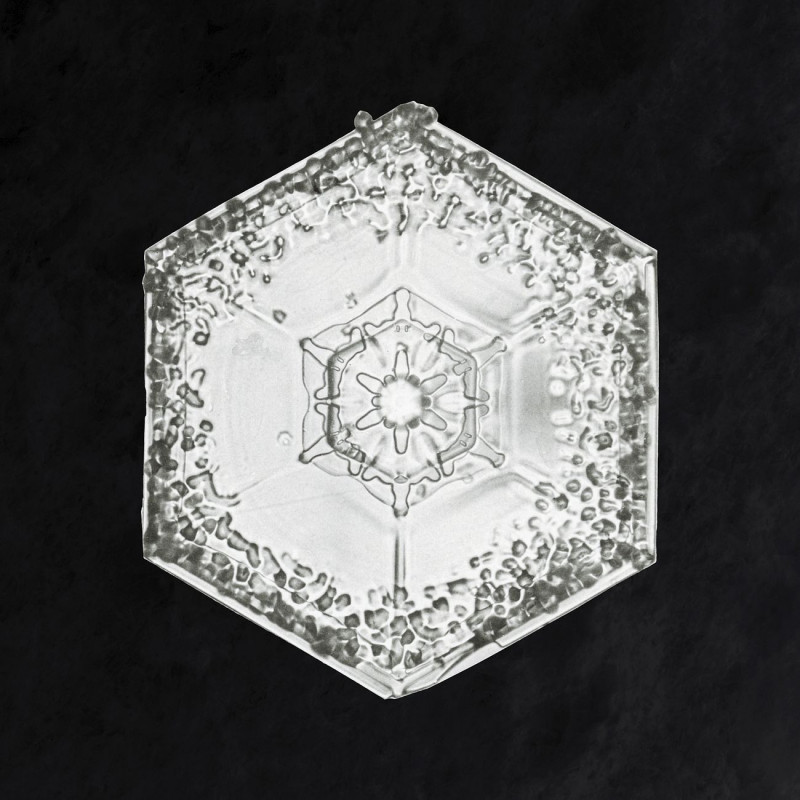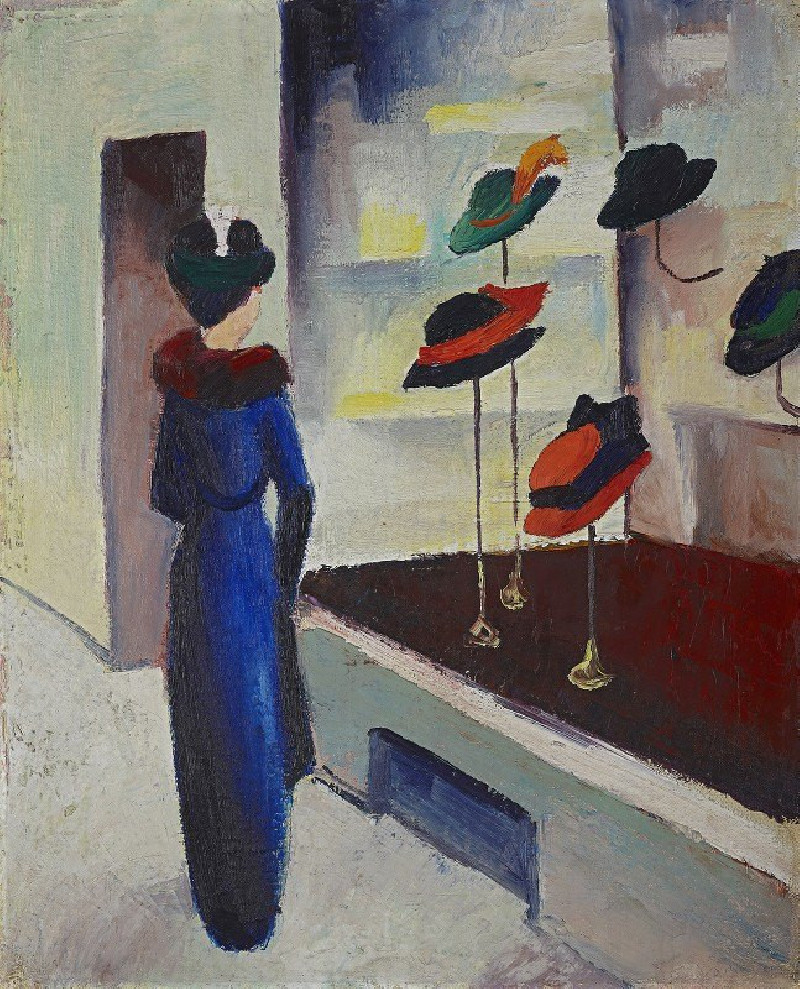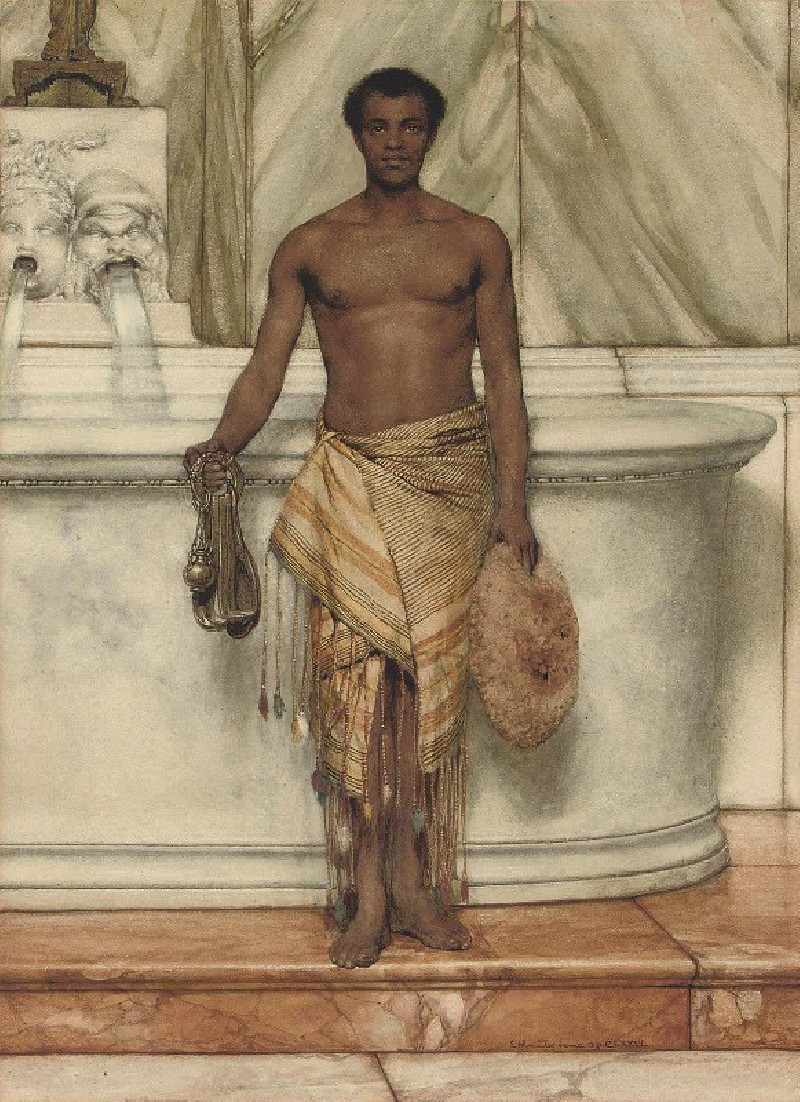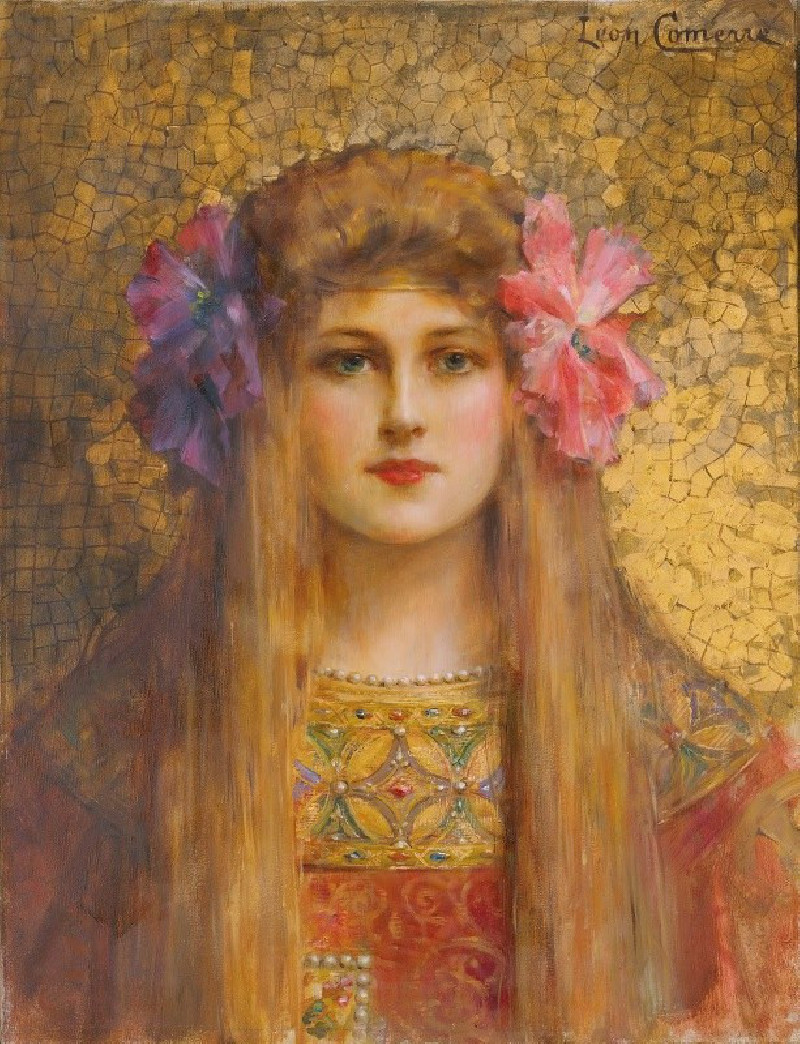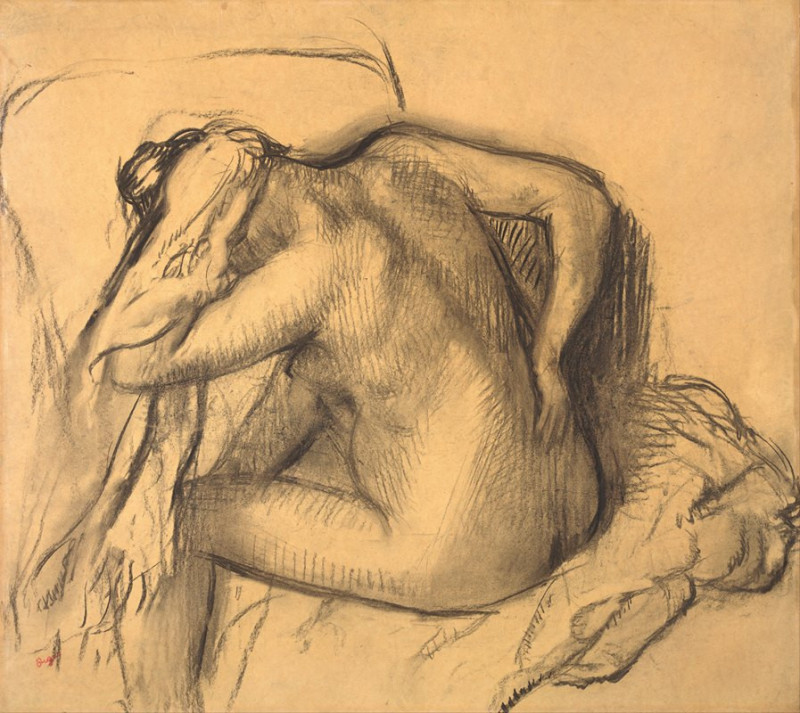Sitzende Dame von vorne (Seated Lady Face-On)
Technique: Giclée quality print
Recommended by our customers
More about this artwork
Welcome to our latest exhibit highlight—the intriguing sketch "Sitzende Dame von vorne" (Seated Lady Face-On) by the renowned Symbolist and Art Nouveau master, Gustav Klimt. This delicately executed pencil drawing captures the essence of Klimt's skill in portraying the human form with both simplicity and depth.At first glance, the artwork presents a woman sitting upright, imbued with an air of regality and grace. Her pose is relaxed yet composed, with her arms gracefully resting and her head slightly tilted upwards, as if lost in contemplation or surrendering to a serene slumber. Klimt's line work is minimal yet expressive, effortlessly outlining the figure’s voluminous garments and the soft curvature of her body.The choice of material—a coarse, tan-colored paper—complements the soft pencil strokes, adding a rustic, timeless quality to the sketch. This backdrop accentuates the spontaneity and fluidity of Klimt’s lines, which travel freely across the page, suggesting rather than defining the folds of the woman’s dress and the contours of her form."Sitzende Dame von vorne" stands as a testament to Klimt’s mastery in capturing the ephemeral beauty of the moment. This work, while simple in execution, invites viewers to delve into a moment of peaceful introspection, reflecting the artist’s fascination with the inner world of his subjects.We invite you to immerse yourself in this captivating sketch and explore the subtle intricacies that make Gustav Klimt a pivotal figure in the world of modern art.
Delivery
Returns
Gustav Klimt (1862–1918) was one of the greatest Austrian symbolist painters of the Art Nouveau era. Renowned as one of the most prominent founding members, and as a president of the Vienna Art Nouveau movement (Vienna Secession). His works were mainly paintings, murals, and sketches. Marked by his numerous erotic drawings, Klimt's primary subject were female figures, and at one point his work was even criticized as pornographic. Klimt found financial success in his "Golden Phase" with decorative techniques and the prominent use of gold leaf in his paintings.

